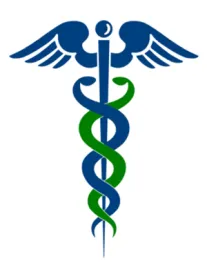Day 3 of the JPMorgan healthcare conference was one of striking contrasts between the old and the new.
The Old: Sitting in the Community Health Systems (CHS) presentation and listening to Wade Smith talk about the slimming down of CHS through the 20+ sales completed or in process, the audience could have heard this speech (with a few exceptions about the pending ACA changes) and not known if it was 2006 or 2016. Very traditional hospital system presentation – admissions and revenue growth (or, as appropriate, losses), hospital market share, number of surgeries, physician recruiting, management of debt and expenses, etc. All appropriate, but a marked contrast to many of the other hospital presentations this week with their emphasis on moving to risk, population health management, apps and patient engagement and brand.
One interesting valuation statistic from CHS – the average EBITDA multiple for their divested hospital transactions was 10x. This is a high multiple for troubled hospital properties, but Mr. Smith noted that they had a surfeit of bidders for their hospital properties including other nonprofit hospital systems and private equity funds.
The New: Two very different presentations today focused more on the “new” aspects of healthcare – IBM Watson Health and Evolent Health.
-
IBM Watson Health – I really, really wanted to enjoy the IBM Watson Health presentation, just like the other several hundred people in the most overcrowded room I saw all week (other than for Vice President Biden’s speech on new cancer initiatives). We were all ready to be wowed – bring on the technology, the magic that will fix healthcare’s problems and give us all hope (Lord knows we need it this month). And, seventeen minutes later when the presenter, Deborah DiSanzo, the General Manager of IBM Watson Health, concluded early on her supposedly thirty minute talk, we all were feeling a little shortchanged. Actually, no, a lot shortchanged. Not one single reveal, no magic tricks, not even anything sexy that we could lord over others who hadn’t made it into the room. Nothing actionable, nothing investable. Just a high level overview of the work that IBM Watson is doing in multiple spheres to grind out the necessary steps to get to the point where they really can fully transform medicine.
And yet, that’s ok. It has taken me several hours to analyze the presentation – and my emotional reaction – fully, but I now am at peace. Here’s why. Ms. DiSanzo correctly took the audience through the explosion of data that has started and will continue to grow in healthcare. She also noted the existing shortage of clinicians, which we all know will continue absent policy, reimbursement and taxation changes by the new administration incentivizing the training of significantly more clinicians. As an aside, I was talking a couple of weeks ago to one of the nation’s leading geriatricians, and he was bemoaning the fact that they can’t annually fill all of their training slots. Students don’t want to become geriatricians even in the face of the Baby Boom demographic promising almost endless work throughout most of their upcoming career. It’s too hard and doesn’t pay enough, and that bottom line hasn’t changed for years, leaving this nation under-resourced and unprepared for dealing with the next twenty years of the Baby Boom. But back to IBM Watson. Ms. DiSanzo also correctly noted the impact of technology and consumerism through the proliferation of smartphones, apps and data focused initiatives.
Taken together, IBM Watson believes this presents a total addressable market (TAM) of approximately $360 billion. To allude to our incoming President, that’s huge. And IBM Watson has started the hard work of laying the groundwork and creating partnerships in multiple verticals. Their current initiatives can be segmented into: 1) value based care; 2) oncology and genomics; 3) life sciences; 4) imaging; and 5) government programs. And IBM Watson has worked hard with acquisitions and other initiatives to amass data resources, with a database now that includes over 200 million claims, 30 billion images, 40 million research papers and abstracts, genomics data and data about the social determinants of health, among others. Ms. DiSanzo said that IBM Watson already has analyzed data from 44% of all Medicare beneficiaries.
Here’s one example that was interesting. Watson was working with Barrow Neurological Institute of Arizona on drug discovery for ALS (Lou Gehrig’s disease). Over the course of some months, Watson analyzed all (that’s right, all) available data on ALS in an attempt to help the approximately 6,000 people per year diagnosed with ALS. IBM Watson then ranked 1500 genes it studied in the descending order of probable association with ALS. Barrow looked at the top 10 identified by IBM Watson, of which 8 affected ALS and 5 never before had been identified as being related to ALS. Clearly, drug discovery can be facilitated by machine learning of the type undertaken by IBM, as can the matching of specific cancers to appropriate drugs or clinical trials. IBM Watson also is working to improve and provide analytics to healthcare providers, with emphasis areas on breast cancer and cardiovascular disease.
And why am I now at peace with the rather uninspiring and abbreviated presentation. Because there is no such thing as an “overnight success.” We in healthcare understand it is about the details – all of them – and how the game of inches is won or lost every day in healthcare. It is clear that IBM Watson has rolled up their sleeves and started the hard and inglorious work of making a difference. And if IBM Watson can bring machine learning and other skills to support the healthcare system in connecting the details and making sure that we all see both the little and the big picture at the same time, the healthcare system, including the patients, providers, payors and investors, all will benefit. And we need more companies doing the same and similar initiatives to fully address the healthcare industry’s needs.
-
Evolent Health: Evolent’s presentation sounded the same notes as my Day 1 and Day 2 blog posts.
-
The U.S. must move more toward risk if we are to avoid breaking the Medicare budget.
-
Provider margins cannot be maintained in the fee for service environment, but can be maintained or improved in a risk-based reimbursement environment.
-
Medicare Advantage is a large opportunity in the next five years.
-
Providers have a choice of moving to delegated risk (or a similar structure) or setting up and owning a health plan. Without either approach, it will be difficult for providers to remain financially sound and/or independent.
-
Evolent clearly has developed a pipeline for growth, with 2.5 million members currently involved in Evolent projects and double or triple digit new clients in the pipeline for the next two years or so. This all fits well with our note from Day 1 about the opportunity in Medicare Advantage, but interestingly Evolent also is seeing their services and role being requested for both “direct to employer” self-insured opportunities and for managed Medicaid. This same market need also is being seen by other healthcare organizations who are looking to partner with or vend services or products to newly formed or growing health plans. The next few years will likely see continuing maturation of such offerings, along with some successes and some crashes as we see the results of this next market cycle.
Read the recap from Day 1: Looking Forward/Looking Backward – Day 1 Notes from JPMorgan Healthcare Conference
Read the recap from Day 2: Food for Thought (and Health): Day 2 Notes from the JP Morgan Healthcare Conference



 />i
/>i
